Borderline Noise Festival — Experimental Art Between Philosophers and Circus Performers
Published September, 2024
by Hayden Potter
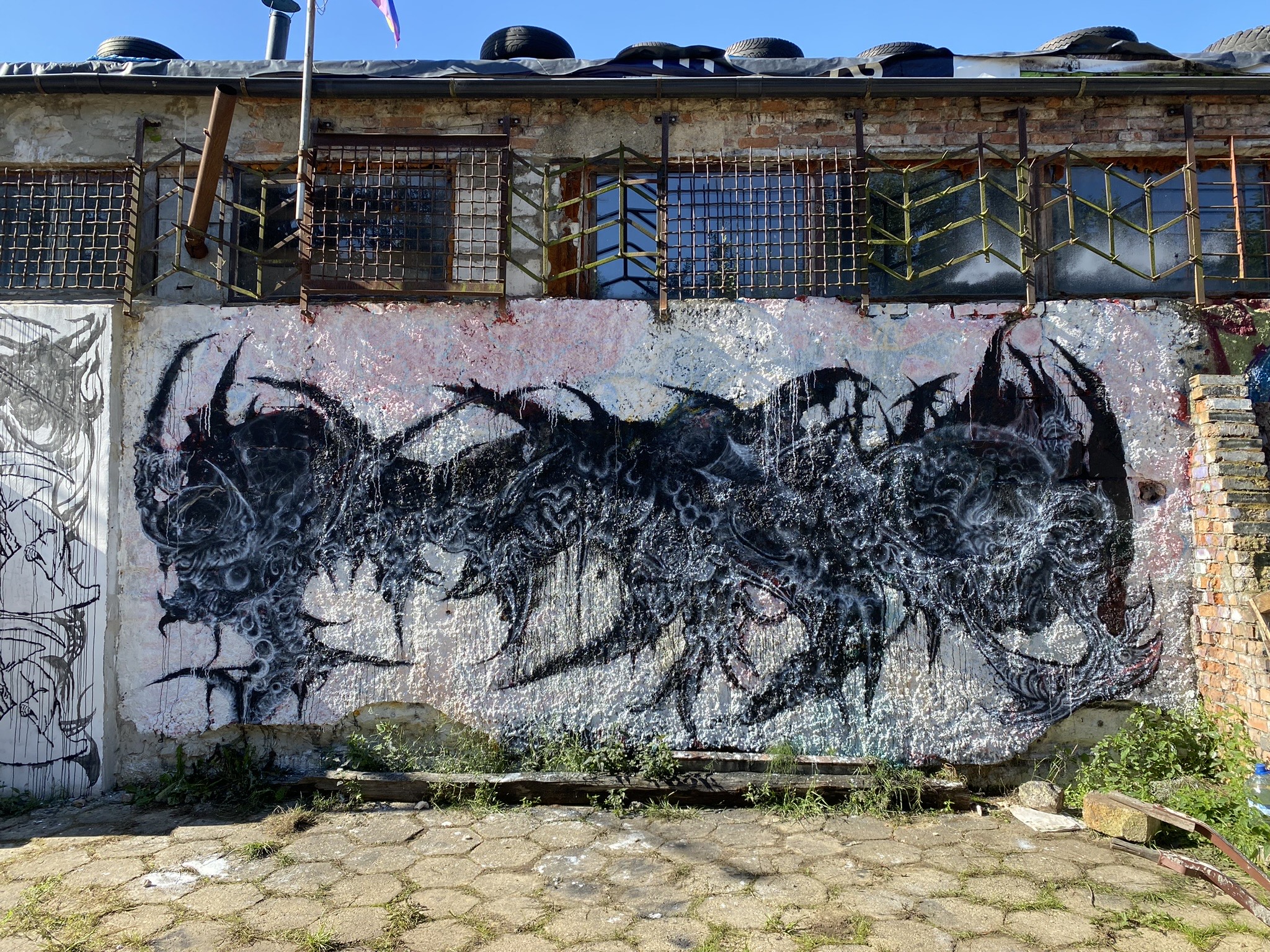
Taking place in the rolling rural landscape of the Jizera Mountains of Lower Silesian Voivodeship, Poland, Borderline Noise Festival is an experimental electronic music gathering happening at Atelier Wolimierz since 2017. The venue has been a fertile space for alternative life, art and culture through the past decade, and hosted its 7th and final edition of Borderline on the 2nd & 3rd of August this year.
Within the border village is the old train station of Wolimierz, now often used as a venue, hosting various festivals and regular DIY punk shows. Michal Zin, co-organiser of the festival shed some light on the background of the place by saying: “our neighbor’s house was a train station that was purchased by a hippy theater group from Wrocław in the 90’s. The Polish government was selling loads of public buildings at the time for next to nothing. Our venue was built in the 70’s and served as a warehouse for coal and agro fertilisers. We’ve been active there as Atelier Wolimierz since 2014″.

It had been only a week since I arrived in Hungary from Australia when I met up with artists from the the aqb Project Space in Budapest who were heading to play at the festival. We’d received the confirmation of our place to stay by the memo ‘the philosophers were leaving the station’ and set off on our 8-hour journey by car, crossing multiple borders, and passing through the dark and foggy terrain of the Jizera Mountains.
It wasn’t my first time arriving in Wolimierz, having once attended a festival independently organised by a Prague-based crew in the Summer of 2020. I recalled sleeping on the floor of an empty theater with bizarre axe-wielding puppets hanging above. Surprised to have even slept a wink with those puppets looking menacingly down upon us, we woke to a woman’s operatic voice piercing through the fog in the early hours of morning. Later, in the clarity of a bright day, the woman’s voice revealed itself within a children’s puppet show where it appeared as the swan song of a five-meter tall giraffe, that needed at least four to five people to operate.
This wet and dreary arrival to the site seemed to be in stark contrast to my last vibrant memories of the place, which already seemed exceptional amidst a scarcity of festivities in the locked-down year of 2020. It would’ve been easy to be bothered by these fracturing expectations after an 8-hour trip, but the circular phrase “it is what it is” came to mind, and we were greeted by a welcome change. Perhaps a little stoicism left by the philosophers who visited before us.
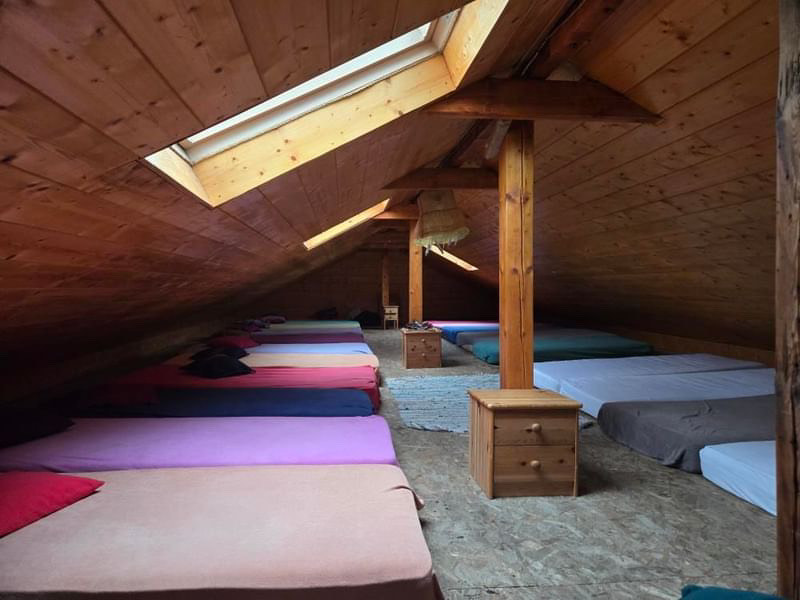
Despite the forecast, the bizarre and vibrant spirit of Atelier Wolimierz still lingered, and the crowds of people, keen to collide from their respective routes of arrival, got cosy together waiting for the rain to pass, so they could set up their tents in the field. We found our room in the old train station, in the attic above the theater I had slept before, although the dangling puppets were absent this time around.
Coming from a scene that is somewhat infrastructurally deprived of a kind of love and attention to sound systems, it was exciting but almost confusing to hear noise being played so loud while still sounding so crisp and dynamic. The BUSS: Big and Ugly System from Berlin was one of two, the other, a huge DIY rig built by Michal that has served as the Atelier Wolimierz in-house system and seen many editions of Borderline before this one where a 100 or so people would get to immerse in its hefty physical sound.
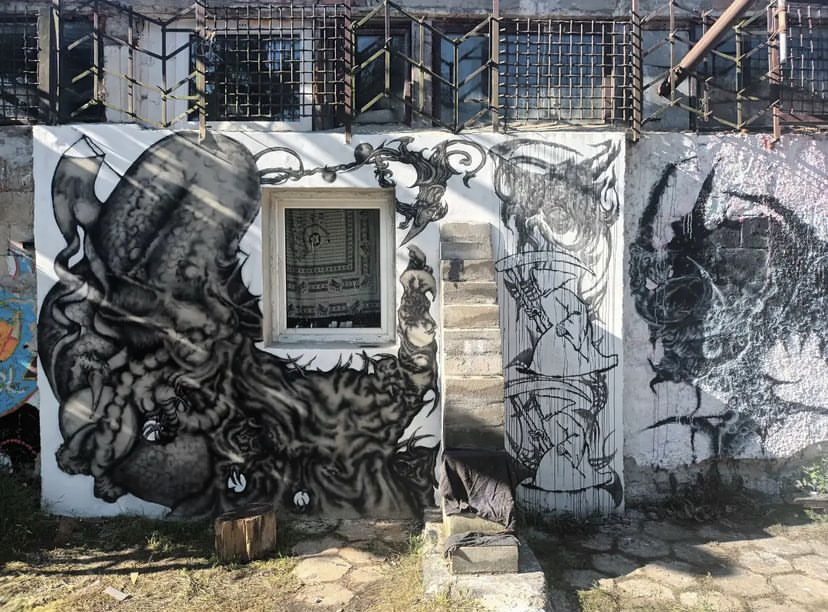
After making our beds up in the roof of the old train station, we head to the warehouse, first hearing some amplified screaming as a familiar siren signalled the festival’s commencement. I arrived inside in the middle of the 2nd act, so it was already quite crowded. I could only see people working with electronics until very late in the performance, when I caught a glimpse of another performer scrapping metal on the floor. It was an interesting moment to hear the acoustic elements fishing for my attention beneath the electronic noise that masked them.
It wasn’t long after the 3rd act that Jonas Gruska, doning a cap of the label LOM, a store and label dear to Bratislava and field recordists abroad, made a distinction to the maximalist beginnings of the festival. The subtle noise of his psychoacoustic sound sculpture provided a 360 degree range of sound as the discreet speakers spun to disperse some very pleasant fusion between synthetic and field recorded noises.

Soon after this, the weight of inhouse soundsystem became hard to ignore thanks to many of the acts to follow, who would return to the harshness. Frequencies were lowered as a duo from Lublin, Piołun & Z.U.O.L. used the inside of two metal boxes to shape the feedback into drones whilst the lights pulsed an anxious red.
Shortly before the set of Budapest’s Büki Laszlo Szasa, I joked with him about the lighting’s dominant use of red as if it were equating to a very serious mood. But for his own set, the lights tried to entangle with the schizoid flashes of granular synthesis he was exploring. The cut-up and stretched noises were both synthetic and sometimes vaguely reminiscent of something more organic, yet still heavily distorted by the granulation processing. It was short, intense and very unpredictable to attempt to follow as a listener, but the brief looped repetition of some samples reinforced a kind of temporary ground in a tempo that the stroboscopic lighting clinged onto to follow with some auxiliary effect.
Later on, the Czech artist Gertie Adelaido threw the room into dramatic climaxes, mixing notable and dynamic sound-motifs of some kind into the digi-noise-punk realm. They perched themselves on the table, kneeling over their gear while intermittently jumping down to mosh through the crowd in some attempt to confront the hangover of a heady atmosphere from the previous performances and restimulate some sense of physicality.
The morning of the next day I came across most of the artists from Hungary along with some new faces across the lunch table. There was a very open sharing of sketchbooks and prints by the artists, including some who had played the previous editions of the festival, but seemed more inclined to be visually engaged this year. One very vocal and playful guy, who first tried to talk to me in Polish, until I revealed my Slaviclessness was by chance, was Stachu Szumski, one of the co-organisers of the festival, who also developed the Borderline poster this year alongside co-designer Ramon Keimig, also present at the table. The dialogue between sound and visual is integral to the festival, evolving their interplay with each other over the past years. While my Summer 2020’s Czech-organised festival had a cute glyph of a sun to encapsulate the atmosphere, Borderline invites a selection of visual and graffiti artists to share their work every year as well as participate in the transformation the wall of the old coal warehouse with their elaborate and weaving visual labyrinths.
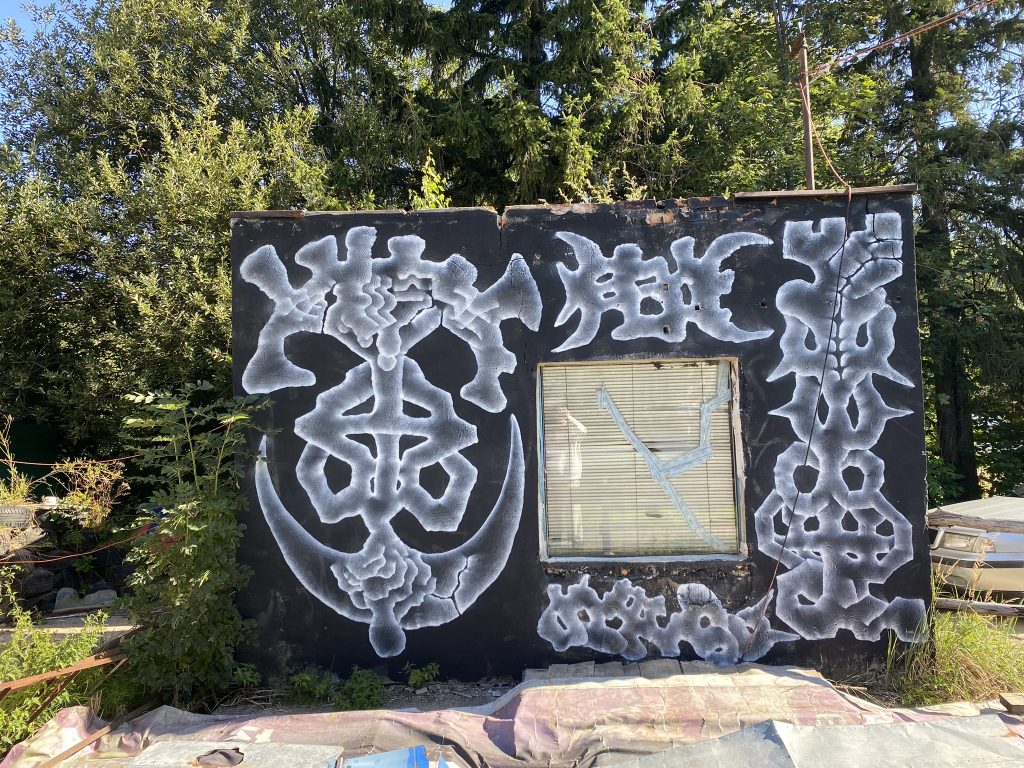
The daytime oscillated between boredom and pleasure, as things began to warm up with DJs sets before moving back into the warehouse for the performance program. One such artist from Kołobrzeg, Poland was XCOPY who used a DIY DJ Setup called the Commodore Amiga. It included two computer keyboards and two tiny USB-powered screens, which would put to shame any pretentious DJ with an expensive tech-rider. The mix was a welcome contrast to the noise of the previous night, and with only a thread of energy left to keep myself vertical, I parked myself in a hammock, swaying to his dreamy mix of footwork, dub, and breakcore, with absurd samples gluing them all together. Having missed his set in the warehouse during the early hours of morning, I only heard more about him on the final day through the talk of a small rivalry between two fans for the last remaining copy of his cassette.
The inside programming later begun and both organisers of the festival, Stachu and Michal, performed a set together that had very little I could find to ground myself in. Both were using laptops, something that looked like puredata, along with a trumpet. The trumpet being in the mix was also no further grounding as it was processed through Stachu’s setup and the sound became extremely dissonant in the noise. The long duration and sensory overwhelm was maybe not necessarily pleasurable in the moment for me, but in retrospect I found it quite curious to reflect on how unclear emotions and means to connect can become in these kinds of performances. The excess of possibility with digital noise was still something I felt was quite fresh about this festival in all, coming from a scene that leans on making noise from analog means.
Soon after, the duo of PEB countered this genreless depravity with an electronic kit each combined with live drumming and screeched industrial rants soaked in delay. Following them, the Dutch/French duo, Cybine Combinations, featured even more frenetic drumming against a modular synth setup played in a similar jittery rhythm. The modular would occasionally blurt some non-electronic samples of spoken words and field recordings reminiscent of scanning through radio frequencies but with much less noise, making for an interesting contrast to the big artificial electronic sounds of most of the festival. It had been one of few improvised sets, at least from a superficial periphery of their playing style, with spontaneous endings in between and shifting gears after each pause.
But improvisation wasn’t always the favored approach, and I had noticed some of the performers yet to have played, for many hours at a time preparing within their headphones on their laptops, as it seemed necessary for confronting some of the unpredictable turns of the live performance.
There were a few moments of the festival where I had seen the excessiveness of the noise as a gesture to allow my senses to relax and dim. But in the case of the performance by Hungarian duo of Bence Barta and János Borsos, ‘Sárgany’, I felt a slowing of motion in the room while immersing into the depth of low frequency drones that formed the cavernous space around. Closing my eyes left me with only a faint sense of the fluorescent glow of uranium illuminating the room, the remnants of which were found glimmering like the mechanism of a wind-up toy reverberating far into the overwhelming and darkened extensiveness of the noise wall.

Having barely digested my snack before I recognised I had misplaced my phone, I frantically searched for it while noise and screaming could be heard from inside, realising another group was beginning. Macskaház, Hungarian for “Cat House” a group of three from Budapest. I arrived directly to the front of where they performed, as I realised I had become a bit too relaxed with the space, and had left my phone right in the center of the room.
One of the members, and probably one of the youngest performers of the festival, bigfloppaboy was masked, screaming, and moving through the crowd antagonistically. He would come back to the centre table to try on dysphoric shades of different vocal effects that provided some unnerving morphic quality to the character. Meanwhile, two of the others from the group sat on the floor, half-crossed-legged with their knees drawn to their chests, heads lurching towards their laptop screens, and staying visually oriented with the waves of noise they were deploying.
In retrospect, it turns out this was another case where performers could not hear their own actions in the mix, as their perspective was so low to the ground and there was little space for them to move with a sense it may break the flow of the performance. Even if they were to move, the domineering motions of bigfloppaboy, pushing through the space and at some stage shouting down at them to “shut up” from the mixing desk, may have seemed to play in with with some cat-like wish for cries and demands to be answered, but to no response. Eventually bigfloppaboy was in the background letting out a range of unamplified screams with the spontaneous addition of Büki László Szása to the group, joining them on the mic with unfiltered sobbing and screaming. It all culminated into an intense dynamic between performers and the environment, socially and self-imposed restrictions on each other’s freedom and the mess and noisiness of collaboration.
Later, Caterina de Nicola, based in Switzerland, brought things together with a comprehensive improvised modular set that was super dynamic and covered a range of noise, that in one moment included her driving her fingers into the rig, giving some theatrical and tactical impression of sculpting the voltages. Soon after, Nestor Peixoto Aballe from Galicia, Spain, seen earlier in the day DJ mixing cheesy reggae with howling grindcore, played under the alias Aethereal Arthropod and began his set dry kick alluding to psytrance but pushing speeds of ‘core’ realm of genre. In the vein of Flashcore, there was a kind of dematerialising of tempo amongst a complex collage of synthetic sirens and mechanical crashes. Although I enjoyed this fully, the rest of my memory of this set is truly only visual. Staring blankly at the bouncing level meter of the amplifier and the multi-coloured strobe hitting the floor, in a slightly desensitised state, I felt tightly wrapped in noise, sensing the end of the festival looming.
Arriving at the final hours of performances, thinking of taking a short break to the bathroom before the Hungarian bedroom-producer Máté Előd Janky aka Alley Catss would begin his set, I found myself locked in, listening to the muffled sounds from within the cubicle alongside a creeping sense of alienation, but thankfully not for long, as my SOS was quickly responded to by one of the crew members in the warehouse. Still, with some tension from this toilet-purgatory, the unsettling feeling in the background coincided swiftly with the dissonant whirrs and the call to attention of a school bell being sampled. The dreamlike collage flashes meeting with bit-crushed heavy bass rumbles culminated in some cohabitation of restfulness and intensity, where eventually I let my body fall into a fatigued squat posture, embracing the headiness and in brief glimpses, visually re-engaging with the performance to notice the twirling foot of Alley Catss maintaining a sense of the rhythm.
Afterwards, lamenting about his left ear being blown out by his own set because he had positioned himself profile to the speakers, he also revealed that prior to the performance he had self-proclaimed that it would be his last live set for sometime. It was something that seemed silly and naive to him afterwards, but not without its legitimacy, as the unconscious continuation of making music for the longer half of his life could still lead to these compromised positions, even after much time to contemplate the dynamics between a performer and audience relationship. Perhaps it is the spaces themselves or the messiness of noise, but the non-prioritising comfort seems part of the making.
Having accrued a wide account of reflections from performers on these moments of dissonance from within the time-sensitive live format where perhaps not hearing each other made for an exciting spectatorship but a less easy collaboration, it was reasonable to assume the workload can become excessive and unsustainable for both performers and organisers. This aversion to landing in burnout also brings a keen awareness of the ephemerality of these projects, even those that have already endured the span of over half of someone’s life.
On the day following the final night of the festival, many of the remaining performers, sleeping and trying recuperate their energy, were awoken to the news that we would have to move on from the old station, for we were only one of many alternative subcultures that our hosts held a temporary home for, and they needed to prepare the space for our successors, a group of circus performers.
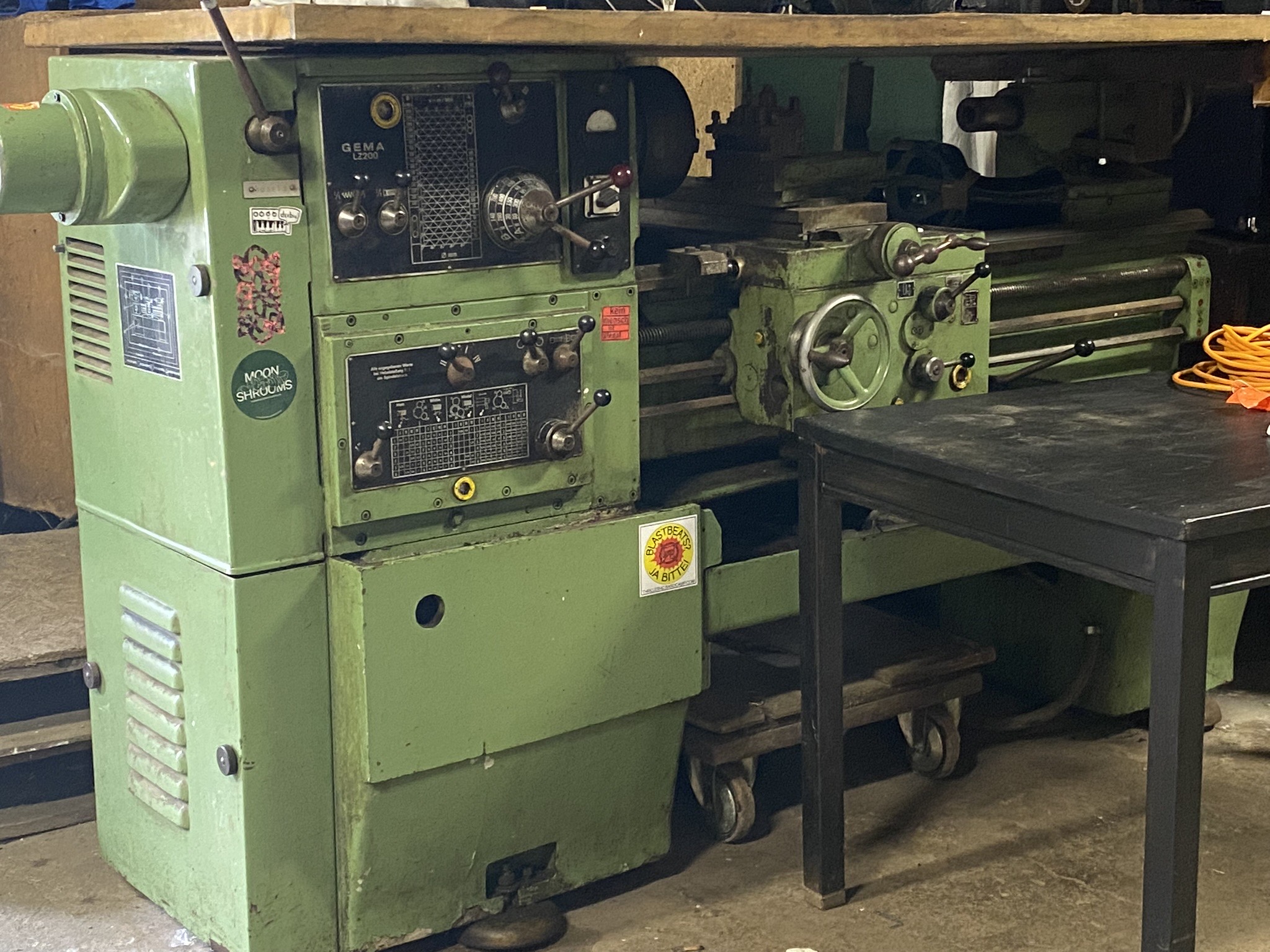
With more certainty than Alley Catss’ proclamation of finality, it had already been announced that this would be the last edition of Borderline Noise Festival. I ended up finding little information or sense of why, and could only assume the decision necessary to encapsulate the time in memory, shifting our focus towards reflection and then, eventually, to speculation of the spiritual iterations of Borderline.
Towards my final days in Poland, I had a conversation with Nestor about truth and artificality. We were circling around the concept of things being ‘made-up’, when he shared a drawing of a text with me that he challenged me to read. It was barely legible, a rather inchoate symbol containing allusion to some new kind of concept. It seemed more interesting to focus less on the fictive quality of a thing like this being ‘made-up’, and dwell on the constructive quality that could imagine it so instead.
Text and photos by Hayden Potter.
This article is brought to you as part of the EM GUIDE project – an initiative dedicated to empowering independent music magazines and strengthen the underground music scene in Europe. Read more about the project at emgui.de.
Funded by the European Union. Views and opinions expressed are however those of the author(s) only and do not necessarily reflect those of the European Union or the European Education and Culture Executive Agency (EACEA). Neither the European Union nor EACEA can be held responsible for them.